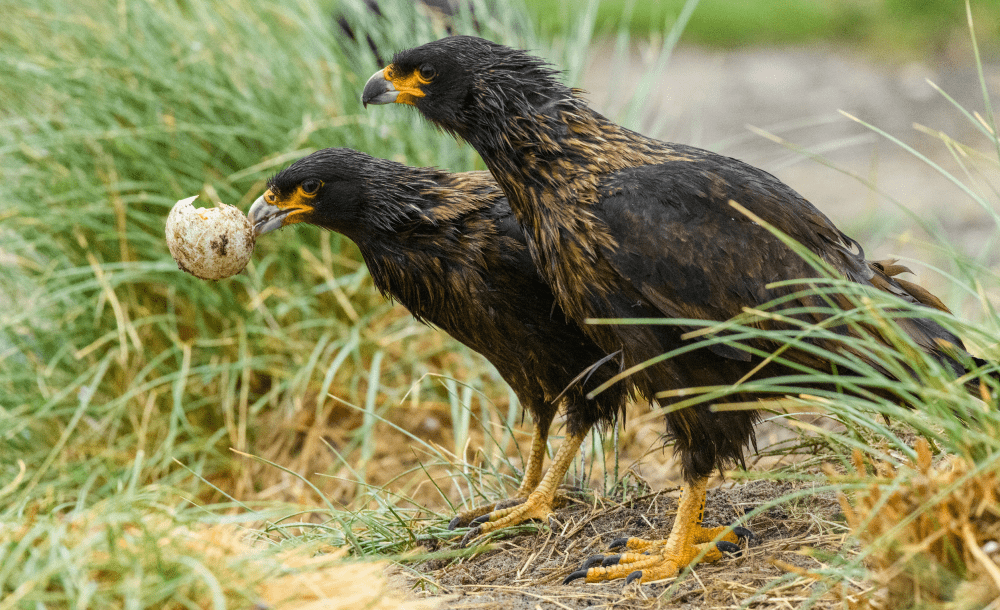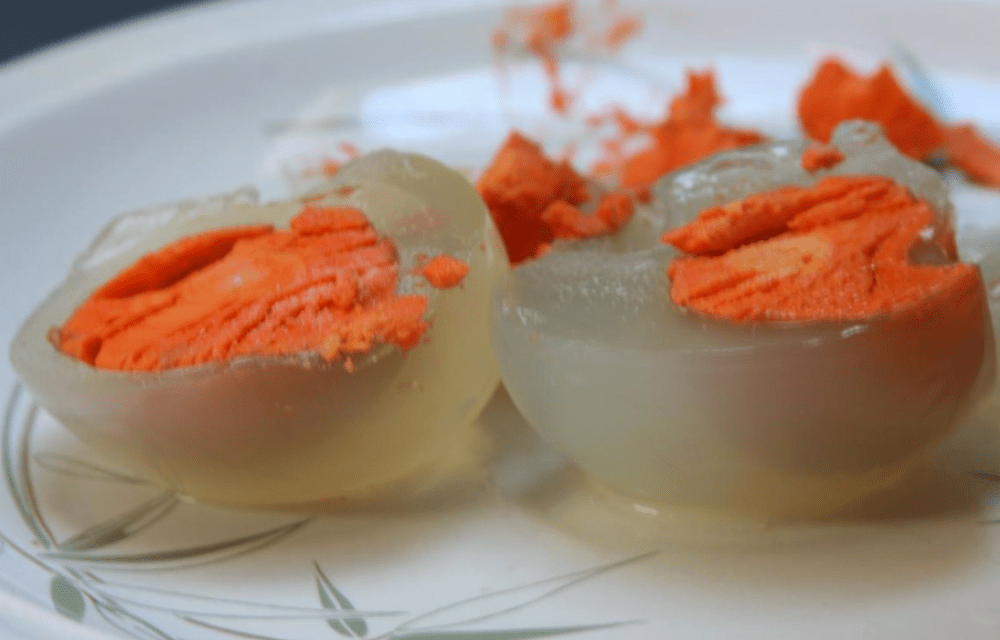When you boil a chicken’s egg, the translucent albumen turns white as it coagulates, creating the white-with-a-yellow-center boiled egg many of us are familiar with. Do the same to a penguin egg, and you end up with a very different aesthetic. Instead of turning white, the albumen stays translucent, creating a very peculiar-looking egg in which you can see right through to the yolk.
Can you eat a penguin egg?
“There are about 17 species of penguin and the eggs of several have been used for food on many occasions,” said Robert Headland, senior associate of the Scott Polar Research Institute at the University of Cambridge, UK, to IFLScience.
While in recent years it’s become illegal to hunt penguins or their eggs in some parts of the world, during Antarctic explorations their meat has been crucial to combatting scurvy and their eggs a life-sustaining food source. If you think eating penguin eggs is weird, just wait until you hear about the research team who dined on 50,000-year-old bison.
Gentoo eggs are an often mentioned variety in old Antarctic recipe books, possibly because they have a longer laying season and will lay more than one, unlike Emperor penguins whose reproductive success rests on a single egg per season. Gentoos can also relay if they lose eggs to predators, though this can delay their breeding season the following year.

Striated caracaras are one species partial to Gentoo eggs, so these penguins have evolved to be able to relay lost ones at a cost. Image credit: Danita Delimont / Shutterstock.com
“I mainly know Gentoo eggs, the most usual ones, and can describe these,” said Headland, who has been exploring both polar regions since 1977. “It is not easy to get them fresh unless laying is seen in progress. Addled ones sometimes explode with the pressure of decomposed contents.”
Delicious. As for their appearance, they are not necessarily unlike those of the waterfowl eggs most people are more familiar with. But something pretty weird happens when they boil.
What does a penguin egg that’s been boiled look like?
“They are about duck egg size, larger and more rounded than those of hens. The shell is thicker and stronger than that of a hen and some caution is needed on cracking one without making a mess. The uncooked albumen is translucent with a slight greenish tint compared to that of a hen. The yolk is much brighter, much more orange [than] a hen’s,” Headland told IFLScience.
“On cooking, boiling (about 10 minutes), or frying, the albumen coagulates but remains translucent, it does not whiten. [The] yolk solidifies and retains its bright colour. If the eggs are whipped, for an omelette, or scrambled, the result is not greatly different from hen, duck, or most other eggs.”

As for why the eggs do this particular magic trick, according to the Polar Guidebook, it’s to do with the ratio of glycoproteins they contain. While chicken eggs are rich in mostly ovalbumin, penguin eggs contain 25 percent penalbumin, which helps them to survive in the region’s freezing temperatures.
How else have penguin eggs been eaten historically?
So, the Tweets were true. If you boil a penguin egg it does go see-through. If you’ve also heard that penguin eggs make for great meringue – something we stumbled across while researching boiled penguin eggs – this too seems to be true, as Donald Morrison who lives in the Falklands Islands found out firsthand.
In the Falkland Islands, the locals, known as “Kelpers”, are outmatched by the resident penguins, with a human population of around 3,500 and more than a million penguins. Food for humans is a complex issue, as while the Kelpers have access to more meat and fish than they could eat, fresh produce is much harder to come by.

Their thin and acidic soil is ill-suited to agriculture, meaning they have to import most of their fresh produce at a considerable price. According to a feature from the BBC, half a white cabbage costs $7.53 (£6.18) while three-to-four zucchinis could be as much as $8.81 (£7.23).
This has meant that Kelpers have learned to get the most out of what is available to them, which historically has included pickling and preserving the eggs of geese, hens, and – yep – penguins. According to Morrison, Gentoo penguin eggs can still be consumed and eaten but only by license holders, of which his friend was one. It’s illegal to collect the eggs otherwise.
Elsewhere, collecting penguin eggs is mostly illegal in areas where humans and penguins cross over. Antarctica does not and has never had an Indigenous population, but there was a time when explorers relied on “egging” to keep their food stocks up during expeditions.
“Penguin egg collecting was done by several ‘heroic age’ expeditions at the time when the birds arrived in their breeding rookeries in the spring,” said Headland. “Shells of some of these, now dry and empty, may still be seen in a few of the historic huts. It was essential to be early and quick to try to get a large supply which, with care, could last till winter.”

What does a penguin egg taste like?
As for how a boiled penguin egg tastes, it seems that even without the illegality of their consumption, you probably wouldn’t find many people chomping at the bit to chew on their translucent, oily albumen.
“The taste is somewhat fishy as krill form a major part of the diet,” said Headland. “A personal comment is that penguin eggs taste much better when you are hungry.”
“They weren’t so tasty once boiled and needed vinegar to make them edible,” said Morrison, but “I made a pavlova with one egg, and it was beautiful.”
So, in conclusion: Penguin eggs boil clear, taste like fish, and make great pavlovas.
There, that’s something you know now.
[H/T: “Polar Prem” Gill]
Source Link: Boiled Penguin Eggs Have See-Through "Whites", Just In Case You Were Wondering